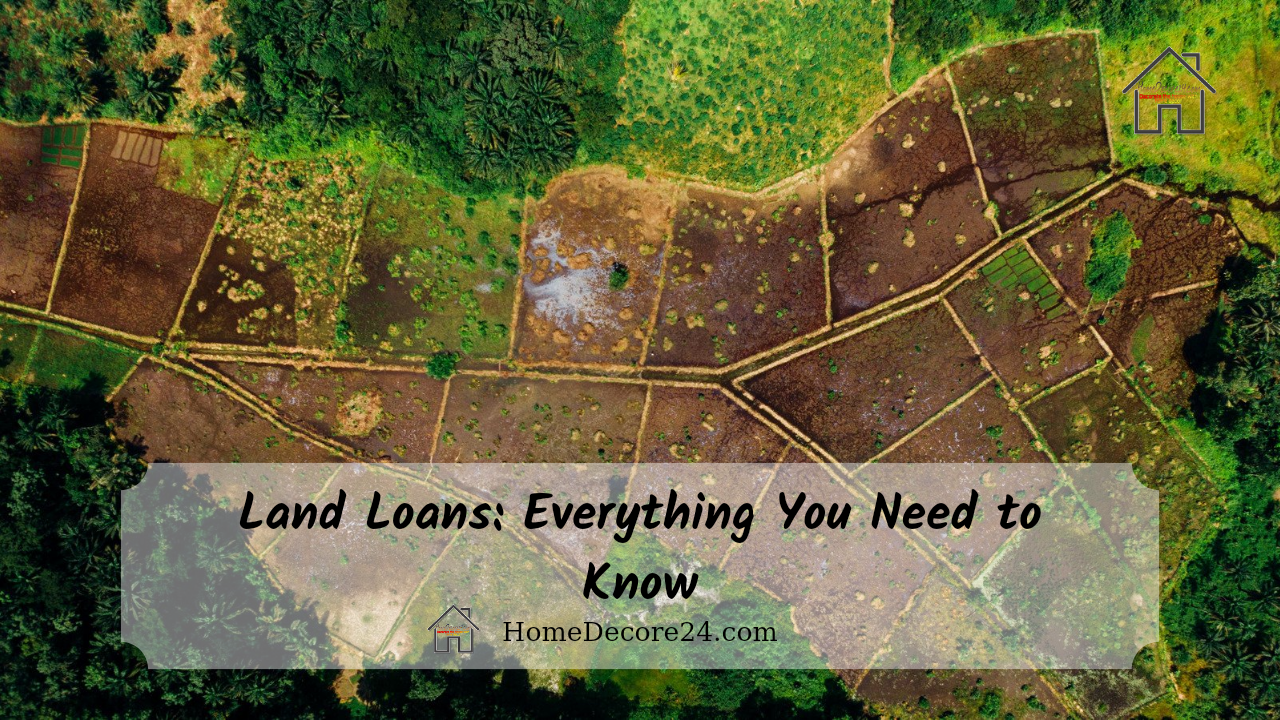
Owning a piece of land is a dream for many, whether it’s for building a home, starting a farm, or for investment purposes. However, the upfront cost of purchasing land can be significant, often requiring financing through land loans. In this comprehensive guide, we’ll walk you through everything you need to know about land loans, from their types and eligibility criteria to their benefits and potential risks.
Introduction to Land Loans
Land loans serve as a financial tool that provides individuals with the funds needed to purchase a plot of land. Unlike traditional home mortgages, which focus on the value of the property and the house built on it, land loans are centered on the value of the land itself.
Types of Land Loans
Raw Land Loans
Raw land loans are designed for purchasing undeveloped land without any utilities, infrastructure, or structures. These loans tend to have higher interest rates and stricter eligibility requirements due to the higher risk associated with undeveloped land.
Lot Loans
Lot loans are intended for individuals looking to buy a piece of land within a residential area for future construction. These lots usually have access to utilities and roads, making them less risky than raw land.
Construction Loans
If you’re planning to build a home on the purchased land, a construction loan allows you to finance both the land purchase and the construction process. These loans often have variable interest rates and a series of disbursements as construction milestones are reached.
Read More: Home Improvement Grants to Fund
Eligibility Criteria
Lenders typically consider factors such as credit score, income stability, debt-to-income ratio, and the purpose of the land purchase when evaluating loan applications. Meeting these criteria will increase your chances of loan approval.
Down Payments and Interest Rates
Land loans generally require a larger down payment compared to traditional home mortgages, often ranging from 20% to 50% of the land’s purchase price. Interest rates can also be higher due to the increased risk associated with land-only transactions.
Loan Terms and Repayment
Land loans typically have shorter repayment terms, often ranging from 3 to 10 years. However, some lenders might offer longer terms. It’s essential to choose a repayment plan that aligns with your financial situation and goals.
Benefits of Land Loans
Investment Potential
Land can appreciate over time, making it a potentially lucrative investment.
Customization
Purchasing land gives you the freedom to build your dream home exactly as you envision it.
Diversification
Land ownership can diversify your investment portfolio beyond traditional assets.
Risks and Considerations
Market Fluctuations
The value of land can be influenced by market trends, affecting potential returns.
Development Costs
Developing raw land can be costly, including expenses for utilities, roads, and permits.
Loan Complexity
Land loans can be more complex than standard mortgages, requiring a thorough understanding of terms and conditions.
Applying for a Land Loan
Research and compare lenders, gather necessary documents, and prepare a detailed explanation of your land use plans to increase your chances of approval.
How do land loan work?
Land loans function as financing tools for purchasing vacant land. Unlike home mortgages, they focus solely on the land’s value. Lenders consider credit, income, and intended use when evaluating eligibility. Down payments are larger, around 20-50%, with typically higher interest rates due to the inherent risk. Repayment terms are shorter, usually 3-10 years.
How to get a land loan?
- Research Lenders: Explore banks, credit unions, and online lenders that offer land loans.
- Check Eligibility: Review their eligibility criteria, including credit score, income stability, and loan purpose.
- Gather Documentation: Prepare documents such as tax returns, pay stubs, and a clear outline of your land use plans.
- Down Payment: Plan for a larger down payment, often 20-50% of the land’s purchase price.
- Application: Complete the lender’s application process, providing accurate information and explaining your intended land use.
- Underwriting: The lender assesses your application and conducts due diligence.
- Approval and Terms: If approved, review the loan terms, interest rate, and repayment schedule.
- Closing: Sign the loan agreement, finalize paperwork, and make the down payment.
- Loan Disbursement: Funds are disbursed, enabling you to buy the land.
- Repayment: Follow the agreed-upon repayment plan.
Pros and cons of land and lot Loans
Pros and Cons of Land and Lot Loans
Land Loans:
Pros
Investment Potential: Land can appreciate over time, potentially offering a profitable investment opportunity.
Customization: Owning land allows you the freedom to build your dream home or project according to your preferences.
Diversification: Land ownership can diversify your investment portfolio beyond traditional assets like stocks and bonds.
Cons
Higher Risk: Undeveloped land has higher risk due to its lack of infrastructure and potential difficulties in reselling.
Limited Income Generation: Raw land typically generates little to no income until it’s developed, potentially leading to holding costs.
Development Costs: Developing land can be expensive, including costs for utilities, roads, and permits.
Lot Loans:
Pros
Infrastructure: Lots are often located in residential areas with access to utilities, reducing development costs.
Easier Financing: Lot loans are less risky for lenders due to existing infrastructure, potentially resulting in more favorable terms.
Staging Development: You can buy a lot now for future construction, allowing time for planning and saving.
Cons
Limited Flexibility: Lot loans are often tied to specific use, like residential construction, limiting alternative plans.
Development Pressure: Ownership of a lot might create pressure to develop quickly, incurring construction costs sooner.
Market Risks: Changes in the real estate market can impact the value and desirability of the lot.
What is a mortgage of land?
A land mortgage is a legal agreement where a borrower pledges a piece of land as collateral to secure a loan from a lender, typically for land purchase or development.
How much is a downpayment on land in California?
Down payments on land in California typically range from 20% to 50% of the land’s purchase price, depending on factors such as the lender, credit history, and loan terms.
Bottom Line
land loans provide a pathway to land ownership, whether for investment or personal use. By understanding the types of land loans, eligibility requirements, benefits, and potential risks, you can navigate the borrowing process with confidence and make the most out of your land ownership journey. Remember that thorough research and consultation with financial experts are crucial before committing to any loan agreement.
✓ What’s The Role of a Stockbroker in Trading?






